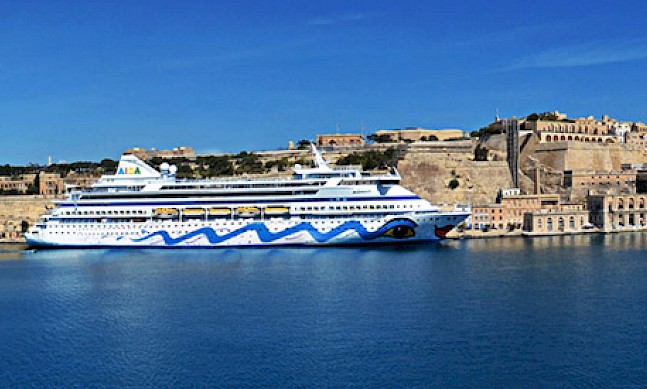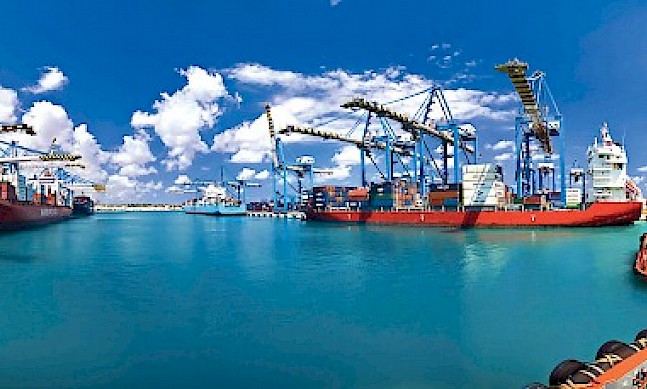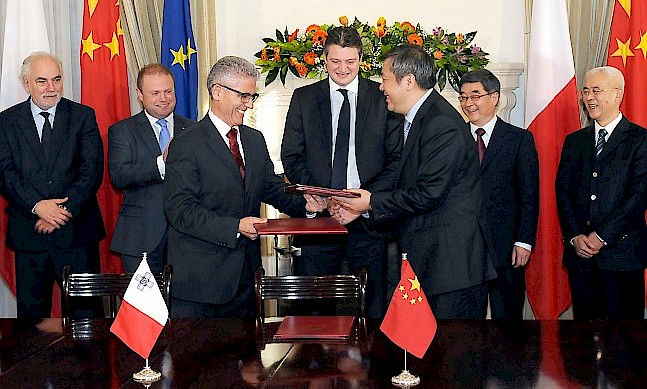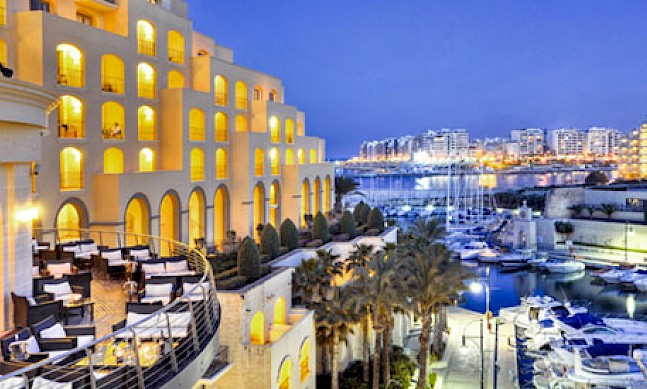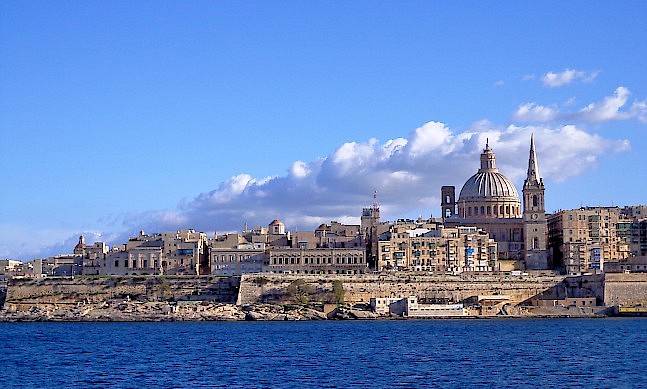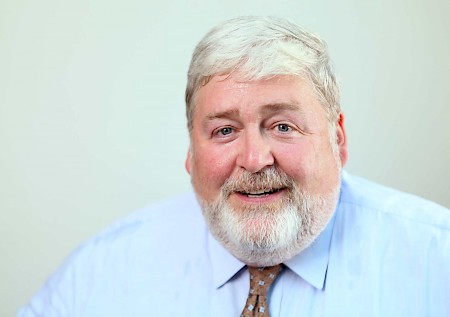
Multinational consortium ElectroGas, comprising Germany’s Siemens, Azerbaijan’s SOCAR, UK-based Gasol and local investor group GEM Holdings, was chosen in 2013 by Malta’s energy company Enemalta to build a new LNG-to-power project. The project involves the provision of a floating storage unit which will be docked in Delimara and the regasification of gas from LNG deliveries to Malta. Michael Kunz, who is Gasol’s head of power project development, serves as the consortium’s project coordinator. He met with The Report Company to discuss the project.
The Report Company: What is behind this group of companies coming together and what does each member bring to the consortium?
Michael Kunz: Gasol and GEM had an existing relationship. Our companies have contacts that go back several years so when Enemalta announced the tender we contacted each other and decided to put a group together that we thought would be able to put a strong offer into Enemalta. We went looking for two other companies that would bolster our resources, one of which was Siemens, which has a substantial background in the power generation business.The other company we approached was SOCAR, which is one of the world’s largest oil and gas trading companies. We thought they’d be an ideal fit for what Enemalta was proposing.
TRC: Now that the project has been approved, which will be the next steps?
MK: What we’re doing at the moment is the detailed engineering. This is a complex project; we have three distinct sections that have to fit together. We have the power plant, the regasification facility and then the floating storage facility, which requires a certain amount of modification to meet the needs of the project. All three sections need to fit together and work seamlessly, so that’s what we’re focussing on at the moment. We are making sure we have a technical solution that will perform safely and reliably for the length of the contracts, which is 18 years.
TRC: What is the time frame that you are working with?
MK: We need to complete the engineering work and to get our financing group through their due diligence process, which they’re doing at the moment. Separately, Enemalta is working its way through the permitting process. Once the permitting process has been finished, that’s when we’ll be in a position to look at when we can get started. In 2015 Malta’s Power Station will be gas-fired.
TRC: Once the project starts running, how do you think it will impact the energy landscape in Malta?
MK: Enemalta has made its objectives very clear. It wants to reduce the cost of generation for the average consumer in Malta, which the project will do by replacing very high cost oil-based generation with low-cost gas generation. It will also reduce emissions by substituting cleaner gas for oil as fuel in the generation process. Finally, the project will provide energy independence for Malta, which will no longer be fully exposed to oil price fluctuations.
“The project will provide energy independence for Malta, which will no longer be fully exposed to oil price fluctuations.”Tweet This
TRC: What is the level of investment and what do you foresee in terms of job creation?
MK: In terms of the level of investment, we’re still in the ballpark of what we put in our tender, which is about €370 million. The engineering isn’t completed yet, and that will affect the final cost, but we have not run into any unexpected obstacles. In terms of job creation, during the construction period, Siemens will be building the power plant but it will be using local labour for the civil works that need to be done. The same will be true for the regasification facility. Going forward into the operating phase, we expect to engage some of Enemalta’s employees. They will be coming over to work for us, which will facilitate knowledge transfer for the benefit of the local workforce.
TRC: What will be the relationship between Enemalta and the consortium and how do you see that relationship evolving in the future?
MK: Enemalta is our customer. We intend to do everything we can to keep them happy. We’re going to supply them with electricity from our power plant, we’re also going to supply gas for Enemalta’s existing power plant, which Enemalta will convert to run on natural gas. We look forward to having a long-term relationship with them that hopefully will grow and develop over the years and lead to other opportunities for both parties.
TRC: What assessments have you carried out as to the impact of the floating storage facility?
MK: Enemalta is undertaking that part of the project and they have commissioned all the studies they need to commission in order to confirm that the project is viable. From our side, we’ve done our own feasibility review to make sure that our storage vessel is optimally locate and that we can manoeuvre the incoming LNG carriers safely to our facilities and we believe everything is fine.
There is space for an adequate safety zone around the two ships even when the LNG carrier is unloading. There will be minimal impact on the traffic going into the Freeport and it shouldn’t have any material impact on the traffic going into the fishing village either.
TRC: How would you appraise the government’s effort to facilitate the growth of the energy sector?
MK: The government is taking several positive steps to encourage the growth of the sector. They are reducing costs and bringing in private investment, which will hopefully lead to increased efficiency, and the project will tap into private sector financing for the energy sector. The government is clearly making an effort to tackle electricity theft and doing its best to ensure that Enemalta is in the best position to provide the services it is supposed to be providing. The prospects for the energy sector are looking very good at the moment, which is why we were eager to bid for the project.
“The government is taking several positive steps to encourage the growth of the sector. They are reducing costs and bringing in private investment, which will hopefully lead to increased efficiency, and the project will tap into private sector financing for the energy sector.”Tweet This
TRC: In terms of the environmental impact, how does ElectroGas balance the development of the project while at the same time preserving the environment?
MK: The first thing to remember is that the project is actually going to be improving the air quality in and around Delimara. We’re going to be reducing oil-fired generation and replacing it with gas-fired generation, so that’s going to be a substantial step forward in terms of environmental benefit.
We will further safeguard the local environment by ensuring we employ the most rigorous operating and safety procedures to reduce the possibility of any leaks, spills or other discharges from the facilities. Safety is one of our highest priorities. LNG is a very safe material to use when handled properly so we’ve put considerable thought into the systems and procedures will be incorporated into the facilities.
We have also designed the facilities to be as efficient as possible. For example, we intend to install a glycol loop between the regasification plant and the new power plant. The loop will absorb the “cold” energy being released from the LNG as it warms up in the regasification plant and carry it to the power plant, where the “cold” will be released to lower the temperature of the air entering the gas turbines. By lowering the air inlet temperature, the gas turbines will be able to generate more power in hot weather conditions using the same amount of fuel, which is an added environmental benefit.
TRC: What are the expectations of the project in terms of the amount of energy that will be generated, and how competitive will pricing be?
MK: The power plant will have name plate rating of 215 MW (three 50 MW gas turbines plus one 65 MW steam turbine) and will produce approximately 195-205MW depending on the weather conditions. In addition we will be able to supply gas to the existing Delimara 3 power plant which has a capacity of up to 150MW. We will also be able to increase our gas supply by up to 10% in the event there is an expansion of either of the two plants.
Our tender included proposed tariffs for the supply of both electricity and gas. We believe these proposals to be very competitive and consistent with Enemalta’s plans to lower tariffs to domestic and industrial end users.


